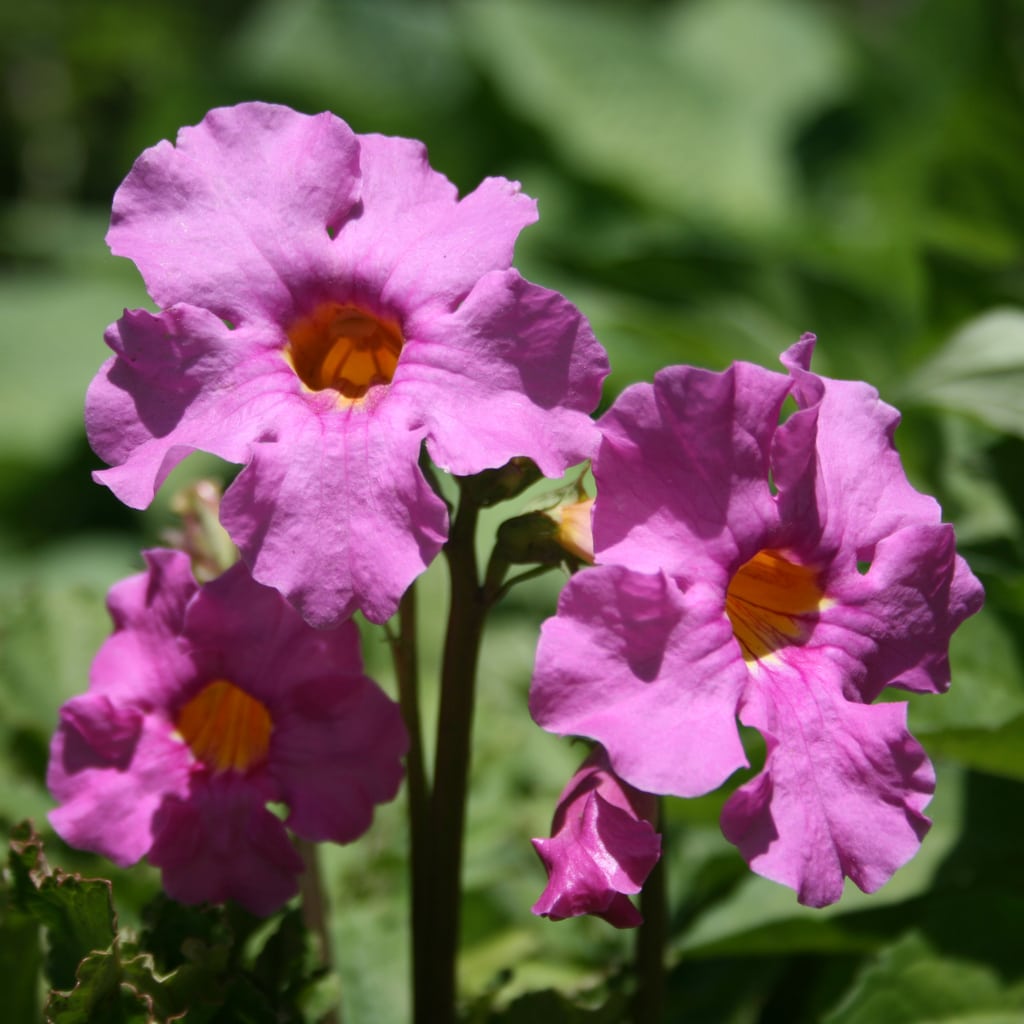What Is A Flowering Fern: Hardy Gloxinia Fern Information And Care


What is a flowering fern? The term refers to hardy gloxinia fern (Incarvillea delavayi), which isn’t actually a fern, but earns the nickname for its deeply divided, fern-like leaves. Unlike true ferns, hardy gloxinia ferns glow with pink, trumpet-shaped flowers from spring to late summer. Growing flowering ferns can be tricky, but the beauty of this old-fashioned plant is worth the extra effort. Keep in mind that hardy gloxinia fern doesn’t tolerate extreme temperatures. Hardy gloxinia fern is perennial in USDA plant hardiness zones 5 through 7, or possibly up to zone 10 if you can protect the plant from hot afternoon sunlight. In cooler climates, grow hardy gloxinia fern as an annual. Read on and learn how to grow flowering fern plants.
Hardy Gloxinia Care
Plant hardy gloxinia fern in rich, well-drained soil, but first, work the soil to a depth of at least 8 inches (20 cm.) to accommodate the long taproot. If your soil is poor, dig in a generous amount of manure or compost before planting. Growing flowering ferns can be done by seed, or by planting small starter plants from a greenhouse or nursery. The plants spread, so allow 24 inches (61 cm.) between each. Hardy gloxinia thrives in full sunlight, but in hot climates, locate the plant in afternoon shade. Well-drained soil is a must for growing flowering ferns. If your soil is soggy, plant hardy gloxinia in containers or raised beds. Water hardy gloxinia regularly to keep the soil lightly moist, but never soggy. Water sparingly during the winter. If you live in a cool climate, grow hardy gloxinia in a pot and bring it indoors during the winter months. Apply a generous layer of mulch to outdoor-grown plants in fall, especially if the climate is chilly. Be sure to remove the mulch after frost danger passes in spring. Hardy gloxinia plants tend to be pest-free, with the exception of slugs and snails. Watch for signs of the slimy pests and treat accordingly. Deadhead flowering ferns regularly to prolong the blooming season. Regular deadheading will also prevent rampant self-seeding. Divide flowering fern in spring whenever the plant looks messy or overgrown. Dig deeply to get all of the long taproot.
Gardening tips, videos, info and more delivered right to your inbox!
Sign up for the Gardening Know How newsletter today and receive a free copy of our e-book "How to Grow Delicious Tomatoes".

A Credentialed Garden Writer, Mary H. Dyer was with Gardening Know How in the very beginning, publishing articles as early as 2007.
-
 Moody Blooms For Spring: 8 Types Of Black Flowers To Add Drama To Spring Displays
Moody Blooms For Spring: 8 Types Of Black Flowers To Add Drama To Spring DisplaysFrom midnight burgundies to inky violets, several types of black flowers can enrich and embolden a spring display. Try these brooding bloomers for a moody garden
By Tonya Barnett
-
 Can Snake Plants Live Outside? Everything You Need To Know For Snake Plants Al Fresco
Can Snake Plants Live Outside? Everything You Need To Know For Snake Plants Al FrescoSnake plants can live outside given the right conditions, but be careful that they don't take over! Learn the best way to use snake plants in your landscape.
By Mary Ellen Ellis